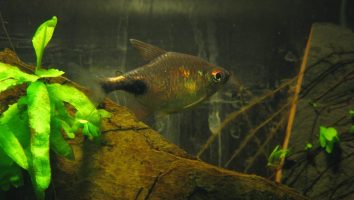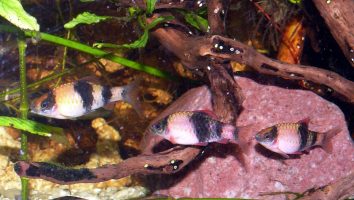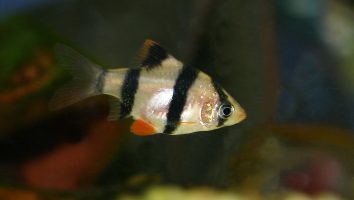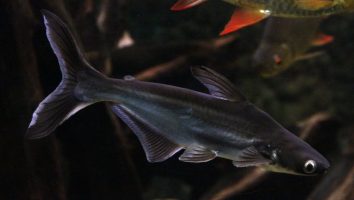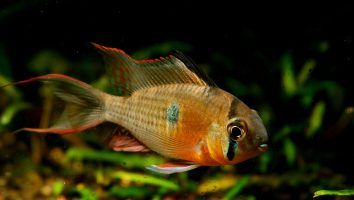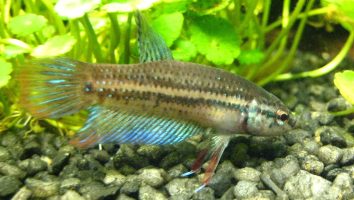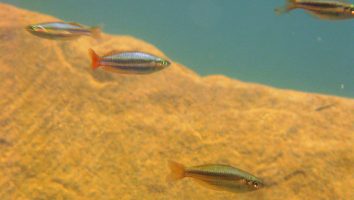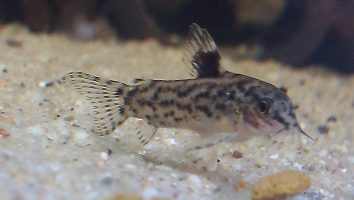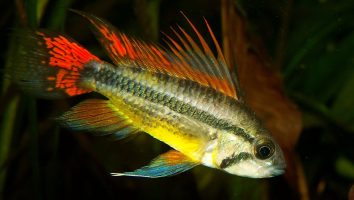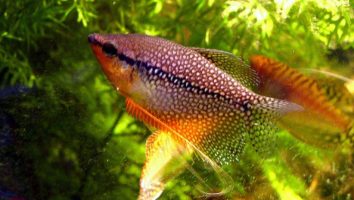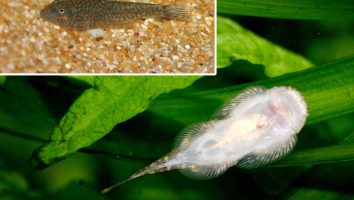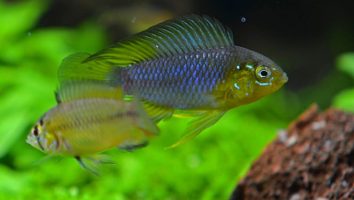The zebra pleco is a freshwater fish that is native to the Amazon basin. They’re a small fish that only gets to be about 2-3 inches in length.
This pleco is black and white striped, which is where it gets its name. The zebra pleco is a nocturnal fish, so they’re most active at night.
If you’re looking for a freshwater fish that is a little bit different, the zebra pleco might be the fish for you. In this guide, we’ll teach you everything you need to know about zebra pleco care.
Table of contents
Species overview
Zebra plecos (scientific name: Hypancistrus zebra) are a popular species of freshwater aquarium fish that are native to the Rio Xingu in Brazil.
They are a cave-dwelling fish, which means they spend a lot of time hiding in dark places. This is something to keep in mind when setting up their tank because you’ll want to provide them with plenty of hiding spots.
Zebra plecos are nocturnal animals, which means they are most active at night. This is another important factor to keep in mind when setting up their tank because you’ll want to make sure there is plenty of darkness for them to hide in during the day.
These fish are omnivores, which means they will eat a variety of different foods. In the wild, their diet consists of small insects, crustaceans, and plants. In the aquarium, they can be fed a variety of different foods, including pellets, flakes, and frozen foods.
Zebra plecos are a popular choice for freshwater aquariums because of their unique appearance and their peaceful nature.
Appearance
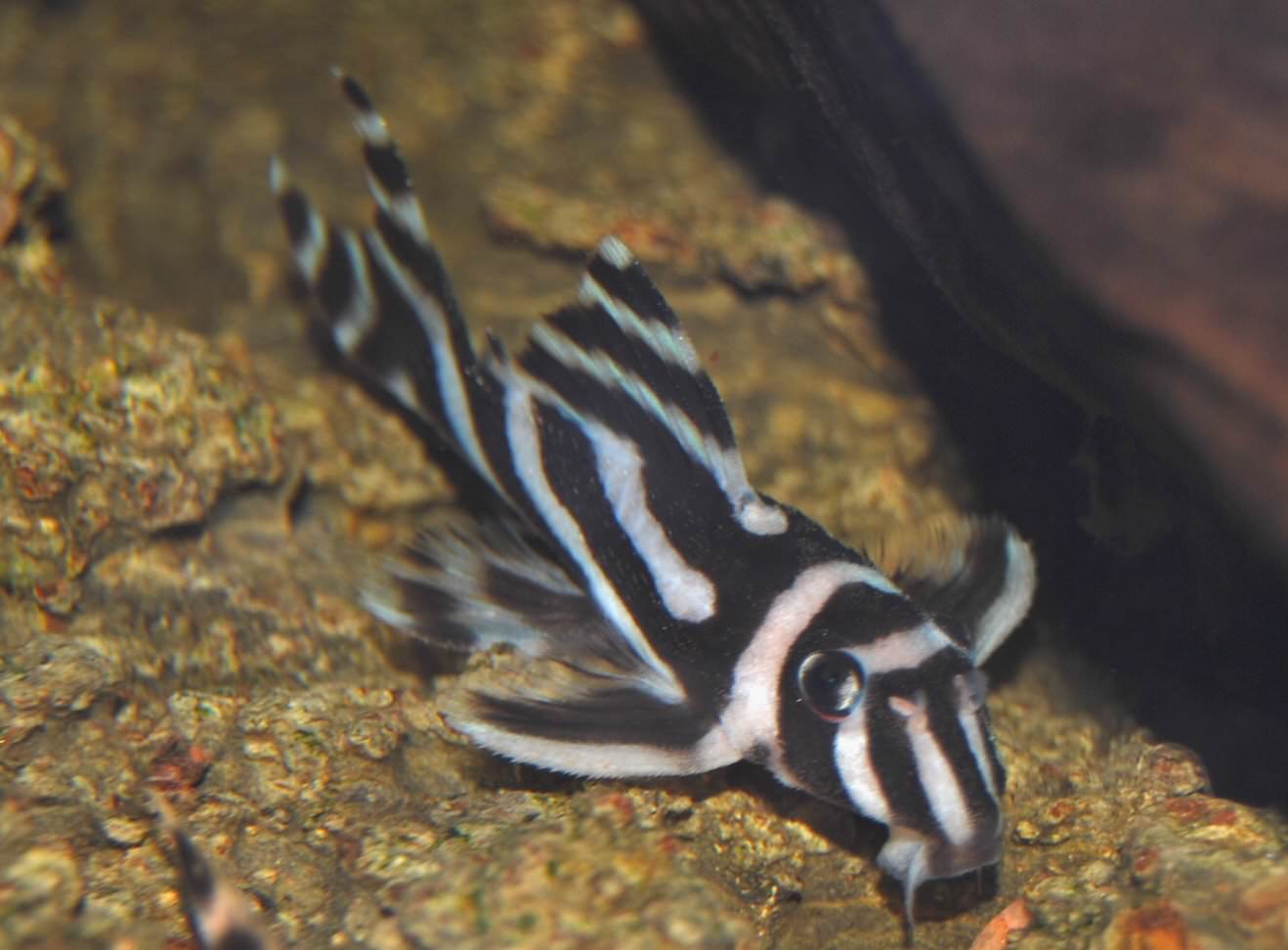
Zebra plecos are one of the more popular freshwater aquarium fish due to their unique patterning. As you can probably guess, this species is named after zebras due to the stripes that run down their body.
These stripes are a dark brown or black and they’re set against a light brown, beige, or cream-colored background. The coloring of the background can vary quite a bit from one fish to the next.
The stripes on a zebra pleco can also vary in terms of thickness and number. Some fish will have very thin stripes that are close together while others will have thicker stripes that are further apart.
The number of stripes can also range from a handful to almost too many to count.
In addition to the stripes, you may also notice some dark spots on their body. These spots are usually black or dark brown and they’re more common on the head and fins.
The fins on a zebra pleco are rather standard for a pleco. They have a large dorsal fin that starts about midway down their body. This fin has a noticeable hump in the middle.
Their anal fin is similar to the dorsal fin in terms of size and shape. Both of these fins are rather tall and extend quite far back on the body.
The caudal fin is forked and fairly tall. The pectoral fins are large and begin just behind the head. The ventral fins are small and thin and they’re located just behind the pectoral fins.
Lifespan
Zebra plecos have a lifespan of around 10 years, although some have been known to live for up to 15 years.
Again, there are a lot of factors that impact their lifespan. If they’re in a well-maintained tank with good water quality, they’ll obviously live longer than if they’re in suboptimal conditions.
Stress is also a big factor. If they’re constantly being harassed by other fish or their tank mates are constantly fighting, their lifespan will be shorter.
Size
Zebra plecos can grow to be about 4-5 inches long.
Tank
Tank Size
The minimum tank size for a zebra pleco is 50 gallons. This fish can grow up to a foot long so you need to make sure you have enough room for them to swim and explore.
They’re also a little bit of a messy fish so you need to have a filter that can handle the extra waste they produce.
Water Parameters
The zebra pleco (Hypancistrus zebra) is a peaceful, nocturnal bottom dweller that is native to the slow-moving rivers and tributaries of the Amazon Basin in South America.
This fish does best in an aquarium that has been set up to resemble its natural habitat as closely as possible. That means warm water, plenty of hiding places, and soft, slightly acidic water.
While the zebra pleco is a hardy fish, it’s still important to maintain stable water conditions. Sudden changes can cause stress, which can lead to illness and disease.
Here are a few water parameters to keep in mind when setting up a zebra pleco aquarium.
- Water temperature: 72 to 82 degrees Fahrenheit
- pH levels: 6.5 to 7.6
- Water hardness: 2 to 12 dGH
- Alkalinity Levels: 4-8 dKH
What To Put In Their Tank
These fish come from slower moving waters in the wild, so they don’t need a ton of space to swim. You can keep them in a tank as small as 20 gallons and they’ll be just fine.
When it comes to setting up the inside of their tank there are a few things you’ll need to take into account.
The first is the substrate. These fish love to hide and root around in the substrate, so you’ll want something soft for them to burrow into. Sand is our preferred choice, but you could also go with something like peat moss.
The second thing you need to consider is the addition of some driftwood. These fish love to hide among the roots of wood, so including a piece or two in their tank is a good idea. Just make sure the wood is fully submerged!
You can also add some plants to their habitat as well. Zebra plecos are known to nibble on vegetation so you’ll want something that can bounce back (Hornwort, Water Wisteria, or Java Moss are all great choices). Don’t feel obligated to go with a heavily planted tank for this species though.
Common Diseases
Zebra plecos are a pretty hearty species, so they don’t get sick very often. However, there are a few things you should look out for, just in case.
The first is hole-in-the-head disease. This is a condition that’s pretty common in plecos, and it’s caused by poor water quality.
It presents itself as pits or holes in the head of your fish, and it can be pretty serious if it’s not treated quickly.
The second is ich. This is a parasites that can affect any fish, and it’s pretty common in freshwater tanks.
It presents itself as white spots on the body of your fish, and it can be pretty dangerous if it’s not treated quickly.
The best way to prevent these diseases is to keep the water quality in your tank high. A well-maintained tank with stable water conditions is the best defense against disease.
Behavior & Temperament
Zebra plecos are peaceful fish that spend the majority of their time hiding in the shadows. They’re nocturnal, so you’re more likely to see them out and about at night.
During the day, they’ll usually stay hidden away in caves or other dark corners of the tank. This is why it’s important to provide them with plenty of places to hide. If you don’t, they may become stressed and start to fade in color.
These plecos are shy fish, so they may not come out even when the lights are off if they don’t feel comfortable. It can take some time for them to adjust to their new surroundings. Once they do, they’ll be a lot more active and you’ll be able to see them more often.
Zebra plecos are peaceful fish that won’t bother other tank mates. The only thing to watch out for is theirsharp teeth. If they feel threatened, they may bite.
Tank Mates
Zebra plecos are relatively small, so they can’t go in with larger fish. They’re also not the most aggressive species, so they can’t go in with more aggressive tank mates either.
The best tank mates for zebra plecos are other small, peaceful fish.
Some good options include:
- Neon Tetras
- Cardinal Tetras
- Ghost Shrimp
- Guppies
- Platies
- Mollies
- Corydoras Catfish
Breeding
Zebra plecos are a bit more difficult to breed than other species. They’re also a bit more particular about their habitat. So, if you’re up for the challenge, here’s what you need to know.
First, you’ll need to set up a breeding tank. It should hold at least 20 gallons of water. The water should be well-filtered and have a stable temperature between 75 and 82 degrees Fahrenheit.
Next, add some caves or hiding places for the fish. These plecos like to have a lot of places to hide. You can use rocks, driftwood, or anything else that’s safe for the tank.
Then, it’s time to add the plants. Zebra plecos are native to the Amazon, so they’re used to living in heavily-vegetated waters. You’ll need to add a lot of plants to the tank to recreate that environment.
Java fern, anubias, and hornwort are all good choices. Make sure that the plants are anchored down so they don’t float to the surface.
Once the tank is set up, it’s time to add the fish. You’ll need at least one male and two females. But, more is better. These fish are social creatures and do best in groups.
The breeding process for zebra plecos is a bit different than other species. The female will lay her eggs on a flat surface, like a leaf or a rock. Then, the male will fertilize them.
After that, the female will pick up the eggs in her mouth and carry them around until they hatch. This process usually takes about two weeks.
Once the fry have hatched, they’ll start to look for food. They’ll eat just about anything, but you should focus on live foods. Baby brine shrimp, daphnia, and bloodworms are all good choices.
As they grow, you can start to introduce them to pellets and flakes.
Conclusion
Zebra plecos are one of our all-time favorite freshwater fish. They’re absolutely stunning to look at and relatively easy to take care of.
They do require a bit more attention than some other fish, but we think it’s definitely worth it.
If you’re looking for a fish that will make a real statement in your tank, the Zebra pleco is a great choice.

